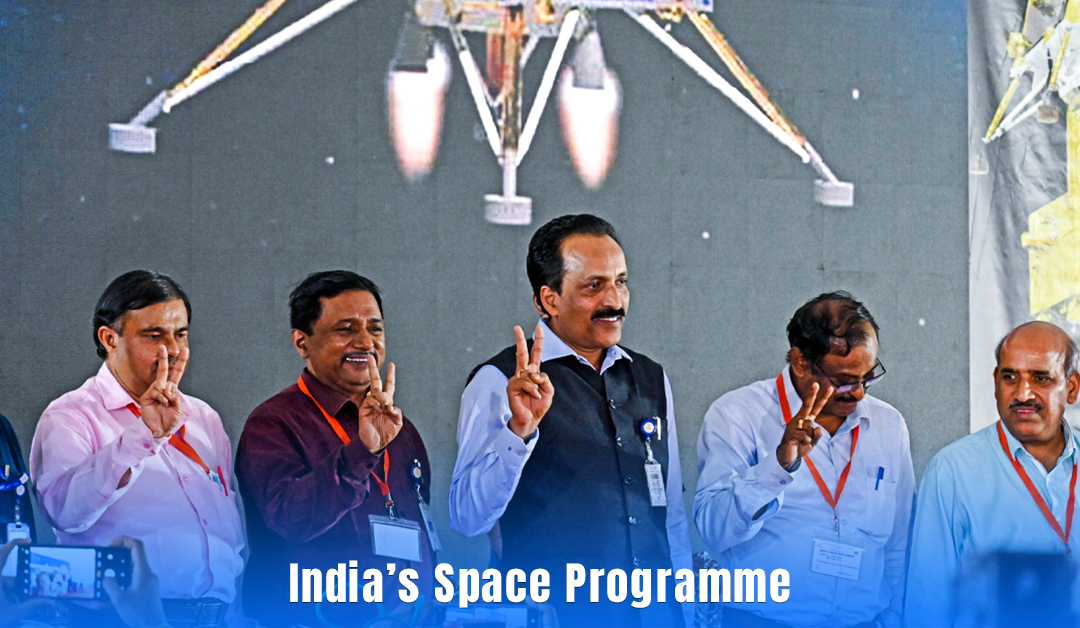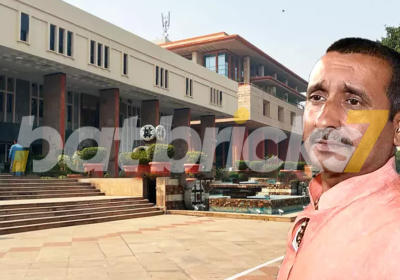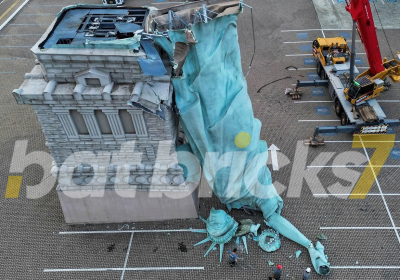PM names 4 astronauts for Gaganyaan mission

The astronauts were awarded “Antriksh Yatri Pankh
Introducing the astronauts to the world for the first time, Modi said they were the “four forces” who will carry on their shoulders the aspirations of 1.4 billion people of India.
Prime Minister Narendra Modi on Tuesday introduced to the world India’s four “astronaut designates”, elite fighter pilots of the Indian Air Force (IAF), who have been selected to be sent to space as part of India’s first human-crewed spaceflight – the Gaganyaan mission.
The announcement was made during Modi’s visit to the Indian Space Research Organisation’s (Isro) Vikram Sarabhai Space Centre (VSSC) research institute in Thiruvananthapuram, Kerala.
The four astronauts – IAF’s group captain Prasanth Balakrishnan Nair, group captain Ajit Krishnan, group captain Angad Pratap and wing commander Shubhanshu Shukla – have been training extensively for the Gaganyaan mission for the last five years in Russian and Indian facilities. They were awarded “Antriksh Yatri Pankh” (astronaut wings) by the Prime Minister at a ceremony on Tuesday.
Introducing the astronauts, Modi said they were the “four forces” who will carry on their shoulders the aspirations of 1.4 billion people.
“The four astronaut-designates are not just four names or individuals, they are the four forces that are carrying the aspirations of 140 crore Indians into space... They symbolise the trust, courage, valour and discipline of today’s India,” Modi said.
He emphasised the four-decade gap after which an Indian will be venturing into space. But this time, there will be a marked difference: the effort will be “Made In India”, he said.
“After over 40 years, Indians will be travelling to space again. But this time, the countdown and the rocket will all be ours,” the Prime Minister said.
Cosmonaut Rakesh Sharma remains the only Indian to ever travel to space. He flew on-board the Russian-made Soyuz spacecraft in 1984.
The Gaganyaan mission, which is expected to take flight in 2025, will be India’s first human spaceflight project and it aims to demonstrate Isro’s human spaceflight capability by launching a crew of three members on a low-Earth orbit for 400km for a three-day mission and bringing them back safely.
Isro chairperson S Somanath said that work for Gaganyaan is progressing at “lightning speed”, and the mission is expected to take flight by 2025. “We will have at least one uncrewed flight for Gaganyaan this year,” he said.
Out of the four astronaut designates, or “vyomnauts”, being trained, three will be selected for the final mission.
Group captain Nair, 47, from Kerala, is the recipient of the Sword of Honour at the Air Force Academy. He was commissioned in 1998 in IAF’s fighter stream. Group captain Krishnan, 41, from Chennai, is the recipient of the President’s Gold Medal and the Sword of Honour at the Air Force Academy. He was commissioned in 2003 and is a flying instructor and test pilot with IAF.
Group captain Pratap, 41, from Prayagraj, was commissioned in 2004 and is a flying instructor and test pilot. Wing commander Shukla, 38, from Lucknow, was commissioned in 2006 and is a fighter combat leader and a test pilot with IAF.
Leading up to the mission, Isro scientists have been conducting dozens of rounds of tests to ensure all systems are safe to carry and bring astronauts back safely to Earth. Isro has also undertaken modification of its rocket and propulsion systems ensuring that they are made safe for human flights – a feat that the Indian space agency has not yet attempted in its 55-year history.
Only threecountries — the erstwhile Soviet Union, US and China — have so far achieved the feat of sending manned missions into space on their own spacecraft.
For the mission, Isro has reconfigured its three-stage medium-lift rocket – Launch Vehicle Mark-3 or LVM3 (known formerly as GSLV Mark-3) – to meet human rating requirements and christened it “Human Rated LVM3”, or HLVM3. This is the rocket that was used for Isro’s high-profile launches such as lunar missions Chandrayaan-2 and Chandrayaan-3, among others.
On top of this reconfigured rocket will sit a newly developed orbital module, which will carry crew module (inside which the crew will be housed) and a service module.
The extensive tests for the mission have been running from as early as 2017 and are set to continue for several months, building on the decades of experience that the space agency has garnered to international acclaim.
Three sets of engine on the rockets have been successfully tested by Isro several times over the past six years, improving on the already well-proven propulsion system of LVM3. Similarly, extensive tests have been carried out, and will continue, on the crew modules which includes emergency escape systems, parachutes for the splash landing in the Indian Ocean, and propulsion and navigation systems.
Just last week, Isro announced the accomplishment of a final milestone in the human rating of its CE20 cryogenic engine that powers the cryogenic stage of HLVM3. With its completion, all ground qualification tests of the CE20 engine for Gaganyaan have been successfully completed, the space agency added.
During his visit to the Vikram Sarabhai Space Centre, Modi also inaugurated three important space infrastructure projects worth about ₹1,800 crore. These include “PSLV Integration Facility” at Satish Dhawan Space Centre, Sriharikota; “Semi-cryogenics Integrated Engine and stage Test facility” at Isro Propulsion Complex at Mahendragiri; and “Trisonic Wind Tunnel” at VSSC.
Modi said that as, according to estimates, India’s space economy is expected to grow fivefold and touch 44 billion dollars in next 10 years. He added that India is becoming a global commercial hub in the field of space.
“In the coming days, India will once again go to the Moon. Future lunar missions will be about retrieving samples from the surface of the Moon,” Modi said.







